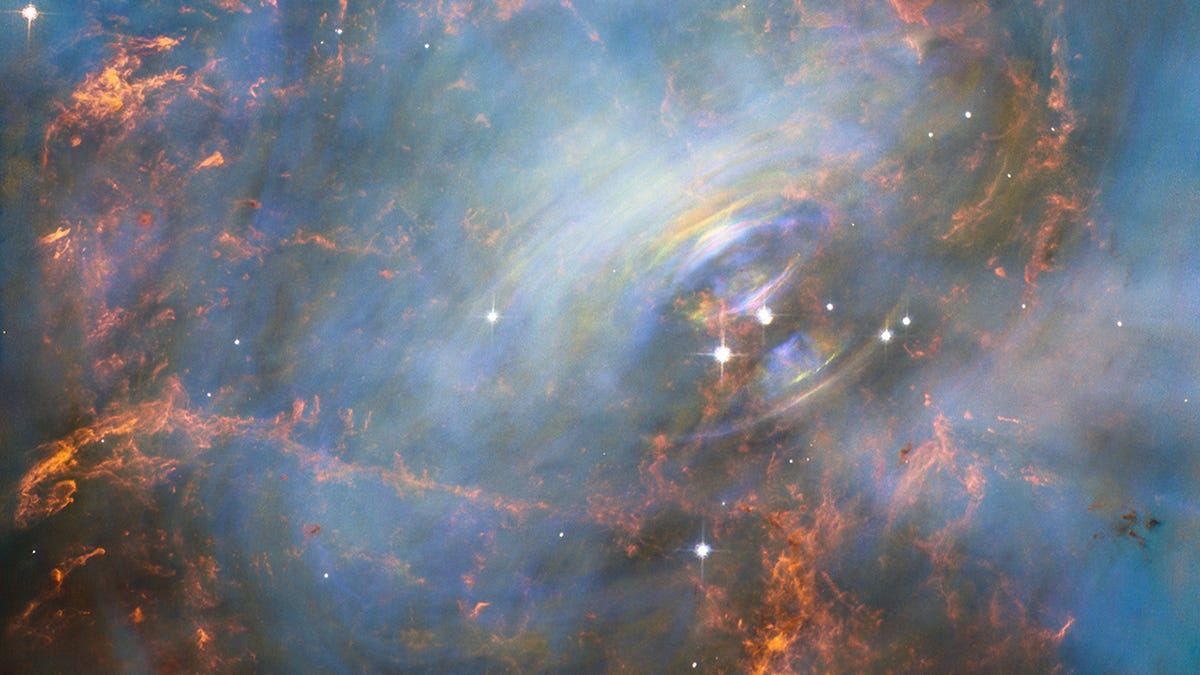Hubble peers into the Crab Nebula's swirling heart
Hubble gets a look under the shell of the Crab Nebula and catches sight of the dramatic remains of a supernova.
When it comes to nebulae named after seafood, the Crab Nebula may be the most spectacular. The Hubble Space Telescope got a good look at what's happening inside the formation, and released a stunning close-up image Thursday. Turns out the Crab Nebula contains the remnants of a supernova.
"The neutron star at the very center of the Crab Nebula has about the same mass as the sun but compressed into an incredibly dense sphere that is only a few miles across," NASA says.
The Crab Nebula is home to a whole lot of space drama. The neutron star is surrounded by debris. The red in the image represents glowing gas. Radiation soaks the area.
"The neutron star is a showcase for extreme physical processes and unimaginable cosmic violence. Bright wisps are moving outward from the neutron star at half the speed of light to form an expanding ring," NASA notes. It makes for an otherworldly image ranking right up there with Hubble's most stunning pictures.
The star at the heart of the Crab Nebula is a bit of a show-off. It spins 30 times each second, sending out energy beams that appear to pulsate. The nebula can be found by amateur astronomers by looking into the constellation of Taurus. It is located 6,500 light-years away.


